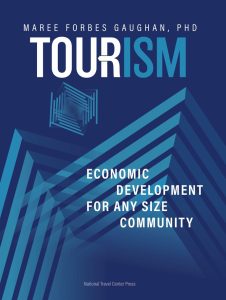Proving the economic impact of tourism, especially in small communities has been one of the most challenging issues tourism programs have faced and getting everyone to believe it has been even more challenging. There are very doable processes that can be used to get at accurate local information, but they have rarely been carried through. Unlike manufacturing or agriculture which are carefully tracked as industry sectors, the visitor industry is not even considered an industry because 99% of businesses are small, locally owned, family-owned, and distributed within many different industry classification codes. Others are privately held and still another segment are non-profits. This situation does not lend itself to collection of revenue information, so instead of the actual hard numbers, tourism programs have relied on generic economic impact models, some of which are regarded with great skepticism by individuals not trained in economics.
This reliance is no longer necessary as there are processes that can be used to work together with local accommodations, restaurants, shops, and attractions to get at a more realistic local number. First and foremost, of course, is the visitor spending that enables small businesses to stay in business, and the tax revenues it delivers on every transaction. These supplemental revenues that the community would otherwise not enjoy, can be earmarked for expanded community services, special projects, or anything else that the “powers that be” would like to propose that will make them shine in the eyes of their constituents. That includes projects they’ve wanted to do for years but never had the funds. Providing them with information obtained from local analysis will make the fact that these economic contributions came from tourism, easier to believe.


